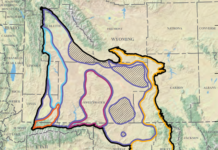
The IEA’s report The Implications of Oil and Gas Field Decline Rates highlights the critical role of supply-side factors, especially production decline rates, in shaping future energy security. While most attention focuses on demand, nearly 90% of upstream investment since 2019 has gone toward offsetting natural declines in existing fields. Conventional oil and gas fields decline at ~5.6% and ~6.8% annually, respectively, with smaller and offshore fields declining faster. Without ongoing investment, global oil and gas supply could fall by 8–9% per year, equivalent to losing the output of major producing countries. As discoveries shrink and new projects face long lead times, even small improvements in decline rates can significantly reduce investment needs and help stabilize energy markets. The IEA writes:
Much attention today focuses on uncertainties affecting the future evolution of oil and natural gas demand, with less consideration given to how the supply picture could develop. However, understanding decline rates – the annual rate at which production declines from existing oil and gas fields – is crucial for assessing the outlook for oil and gas supply and, by extension, for market balances.
The International Energy Agency (IEA) has long examined this issue, and a detailed understanding of decline rates is at the heart of IEA modelling and analysis, underpinning the insights provided by the scenarios in the World Energy Outlook.
This new report – based on analysis of the production records of around 15 000 oil and gas fields around the world – explores the implications of accelerating decline rates, growing reliance on unconventional resources, and evolving project development patterns for the global oil and gas supply landscape, for energy security and for investment. It also provides regional insights.
Read the report here.



